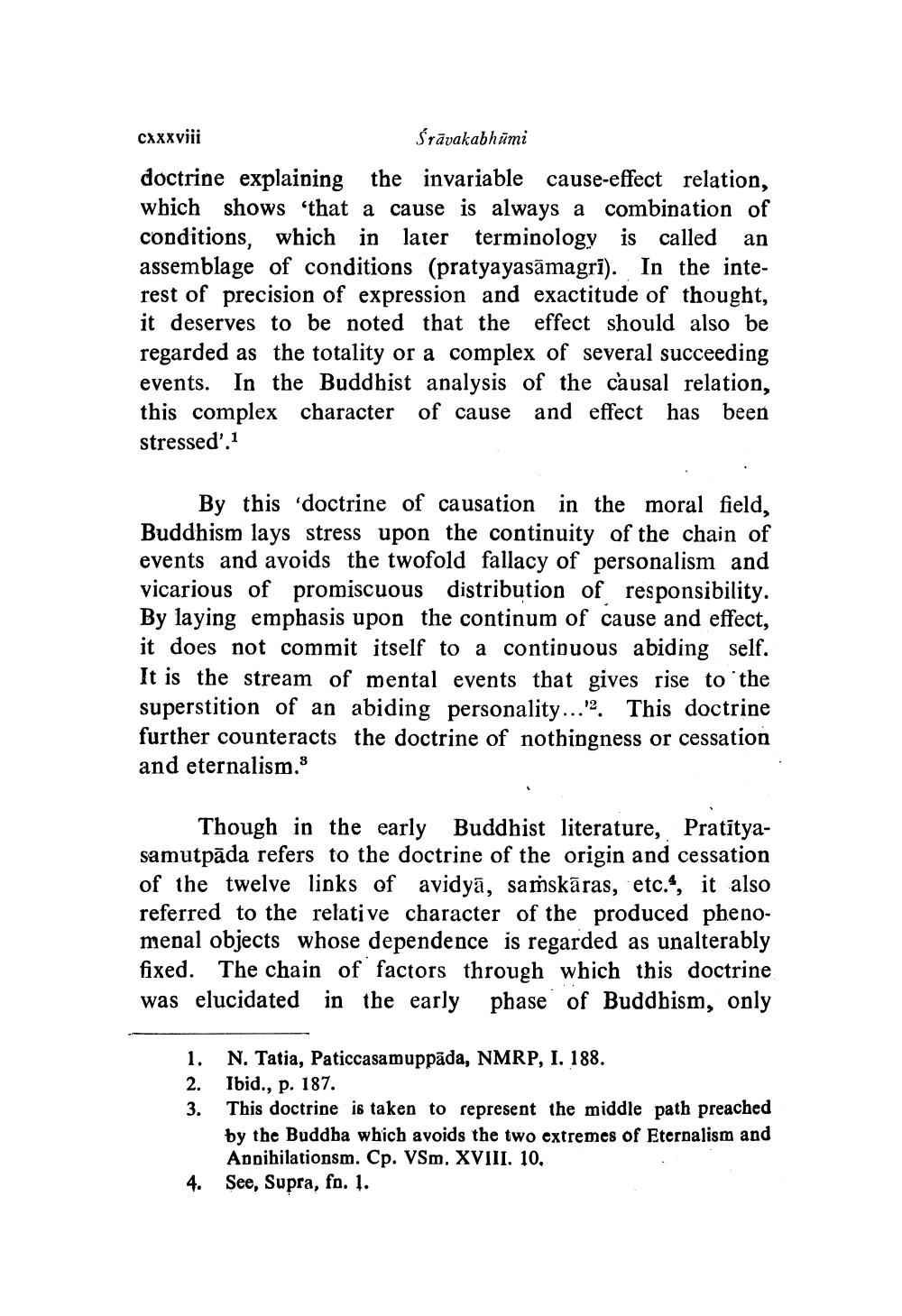________________
CXXXViii
Śrāvakabhumi
an
doctrine explaining the invariable cause-effect relation, which shows that a cause is always a combination of conditions, which in later terminology is called assemblage of conditions (pratyayasamagri). In the interest of precision of expression and exactitude of thought, it deserves to be noted that the effect should also be regarded as the totality or a complex of several succeeding events. In the Buddhist analysis of the causal relation, this complex character of cause and effect has been stressed'.1
By this 'doctrine of causation in the moral field, Buddhism lays stress upon the continuity of the chain of events and avoids the twofold fallacy of personalism and vicarious of promiscuous distribution of responsibility. By laying emphasis upon the continum of cause and effect, it does not commit itself to a continuous abiding self. It is the stream of mental events that gives rise to the superstition of an abiding personality...". This doctrine further counteracts the doctrine of nothingness or cessation and eternalism.8
Though in the early Buddhist literature, Pratityasamutpāda refers to the doctrine of the origin and cessation of the twelve links of avidya, samskāras, etc., it also referred to the relative character of the produced phenomenal objects whose dependence is regarded as unalterably fixed. The chain of factors through which this doctrine. was elucidated in the early phase of Buddhism, only
1. N. Tatia, Paticcasamuppada, NMRP, I. 188.
2.
Ibid., p. 187.
3.
This doctrine is taken to represent the middle path preached by the Buddha which avoids the two extremes of Eternalism and Annihilationsm. Cp. VSm. XVIII. 10.
4. See, Supra, fn. 1.




